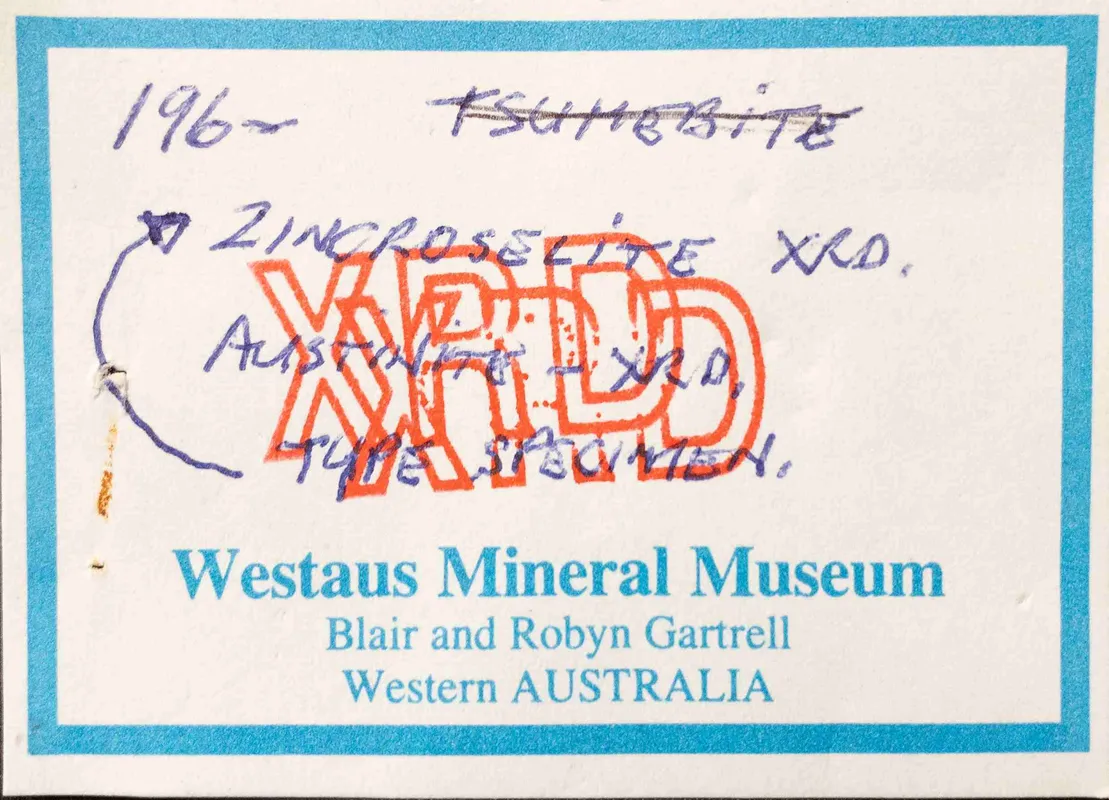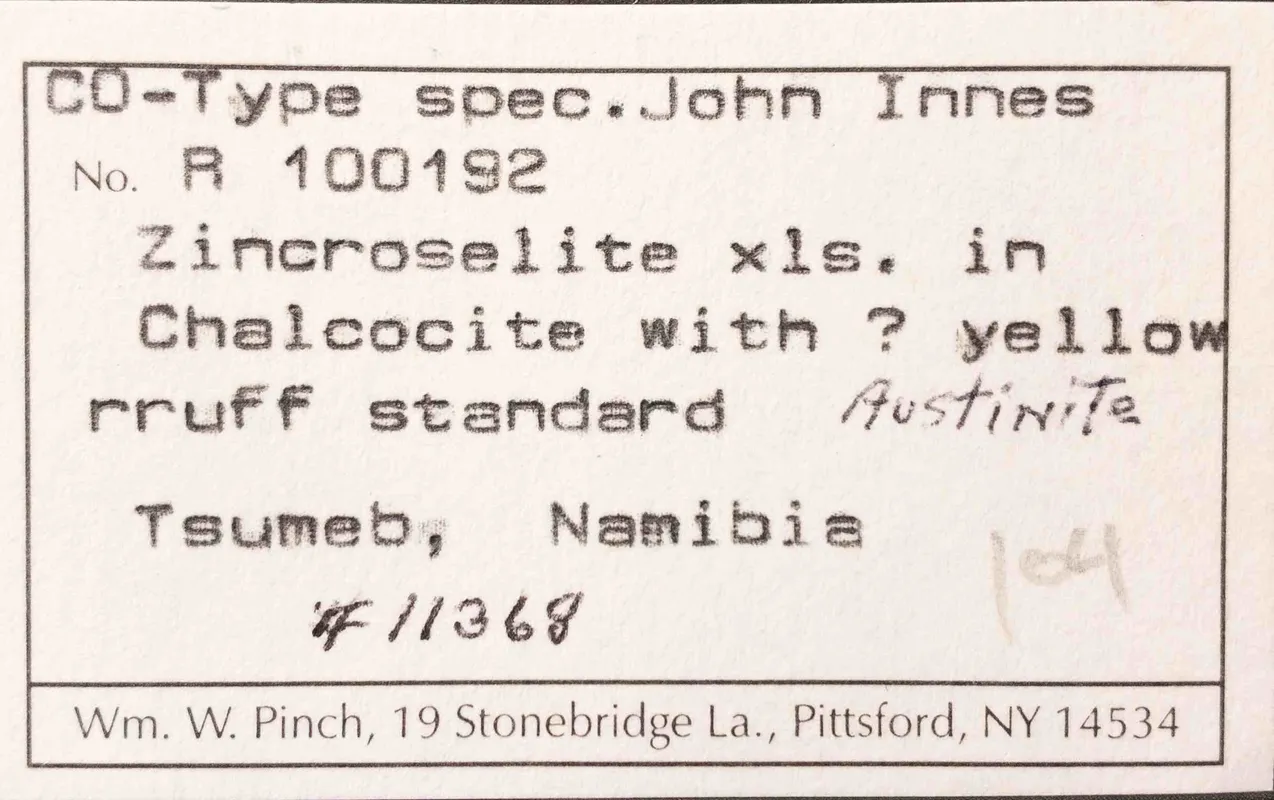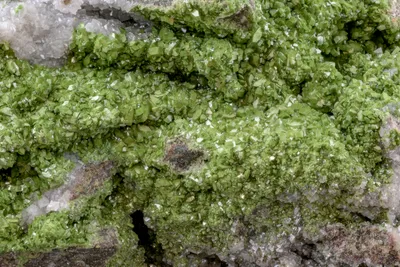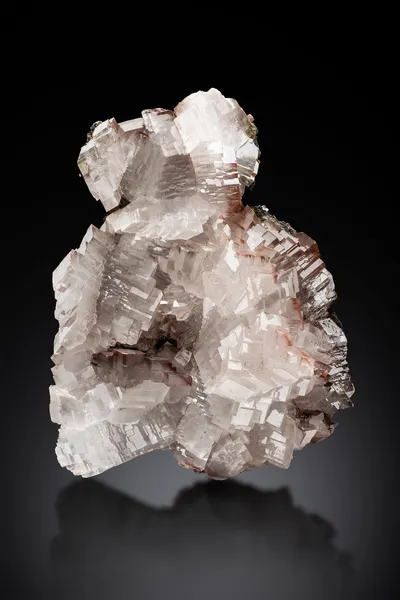
Image Credit: Malcolm Southwood

Image Credit: Malcolm Southwood

Image Credit: Malcolm Southwood

Image Credit: Malcolm Southwood




Title
zincroselite (w. austinite)
Principal Mineral
Size
Cabinet; 106mm
Location in the Mine
Second oxidation zone (?)
Collection
MGMH 2020.7.778
Provenance
Innes, J.; Gartrell, B.; Sielecki, R.; Pinch, W.W.
Entry Type
Specimen TSNB583
Description
A vuggy massive sulphide matrix hosts white, columnar crystals of zincroselite (to 4 mm), off-white calcite and yellow austinite (Exhibit 2). The specimen is included in the RRUFF database project (R100192) where it is the Raman standard for zincroselite. Both the zincroselite and the austinite are XRD verified and the zincroselite has been confirmed by single crystal XRD (https://rruff.info/zincroselite/display=default/; accessed December 2024).
The specimen was originally in the collection of Tsumeb Corporation mineralogist John Innes. After Innes' death it passed to Blair Gartrell (catalogue number 11368; Exhibit 3), and thence to Rob Sielecki who sold it to the late Bill Pinch in the mid-1990s (Exhibit 4). The specimen is number JI-196 in the Ernie Nickel catalogue of the John Innes Collection (unpublished) where it is described as "Massive black sulphides and grey quartz, with vuggy patches (up to 30 mm) containing creamy zincian calcite, clear yellow austinite (XRD B10386) crystals (up to 1 mm), and colourless, prismatic, parallel-growth zincroselite (XRD A10385) crystals (up to 5 mm).” The XRD numbers relate to analyses performed at the Commonwealth Scientific and Industrial Research Organisation (CSIRO) in Perth, Western Australia in the early 1990s.
According to the RRUFF database, this specimen has co-type status; however, the paragenesis is notably different from the original description of zincroselite provided by Keller et al. (1986). The location in the mine is not recorded, but it is almost certainly from the second oxidation zone, although possibly from a different occurrence to the type specimen (which, according to Keller et al. (1986) was found rom 31 Level, 1 Sublevel, West 40 Stope).
XRD and Raman spectra are available from https://rruff.info/zincroselite/display=default/
Associated Minerals
austinite; calcite; quartz


